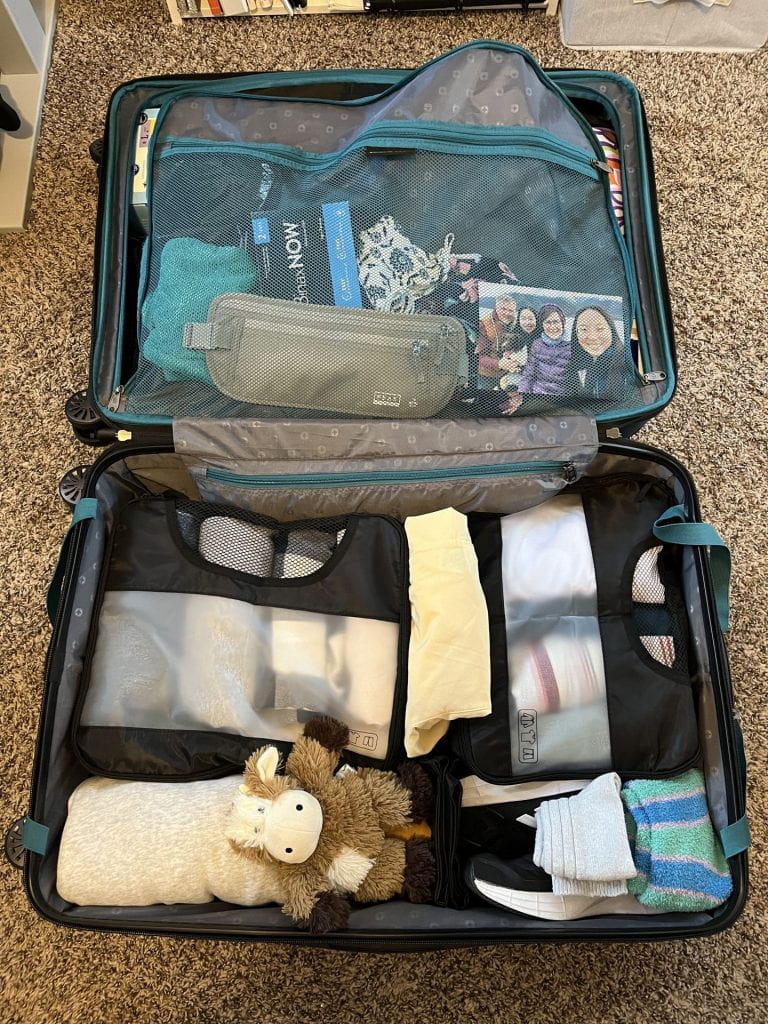Tues. Jan. 9, 2024 — Today was my second day of class and my fourth day of being in Costa Rica! Everything is very new and I’m liking San José so far. My favorite aspects about San José are the historical sites, the weather, and the food options.
There are many sites to visit, including El Teatro Nacional (The National Theater – see photo below), which is an elegant, revered building that hosts plays, classical concerts, dance, and other major events. It was built in 1897, and architecturally reflects the lavish, neoclassical style of the 19th century. On my tour, we didn’t stay for long and saw only the lobby (see photo of statue below). I hope to return!


Also, the weather has been wonderful, since Costa Rica is located near the equator and is experiencing summer. It’s been a relief to escape the wind, rain and cold of Bellingham, and soak up the sun in Costa Rica. The humidity isn’t too bad either, as I originally thought. Temperatures and humidity may increase in coming months, though. I’m excited to develop my tan and break out my shorts! Some locals wear shorts, but it’s more common to see pants and nicer attire.
In addition, I’ve been enjoying the home cooked meals from my host mom (Mamá Tica) for breakfast and dinner. Lately, she’s made refried-bean stuffed empanadas, spinach omelettes wrapped in warm tortillas, yuca, and gallo pinto – a traditional Costa Rican dish of beans and rice. Mamá Tica is so sweet! I can’t wait to try some of the local restaurants too, and probably avoid the U.S. chains like KFC and McDonald’s. There’s a surprising amount of U.S. consumerism everywhere that I want to escape.
Everyday, I have a Spanish class from 9am-12noon at the University Veritas. This first week is just for international (study abroad) students, and next week, the local students officially start their semester with us. My Spanish class has only 7 people, and we’re squished into a tiny room on the second floor. The university is like a labyrinth with its confusing room numbers. Take this number for example: “225”. Unlike in the U.S. and other places, “225” does not mean the room is located on the second floor. The first number denotes the “zone”, the second number indicates the floor level, and the third number is the specific classroom number. On the first day of school, it took me a long time to find the classroom 229, because it was in an entirely different area than I thought. I went to the second floor and saw only classrooms in the 100-level, and had to ask someone for directions (in Spanish). Luckily, someone pointed me to a separate wing of the university, where zone 2 is situated. I’ll get the hang of it!
In terms of student life, I look forward to joining the tropical dance classes and cooking classes! They start next week. Also, University Veritas is an art and design school. Unfortunately, I cannot take more classes due to the structure of my program, but maybe there is a club I partake in. I’ve made several friends from different host universities across the U.S., so I’m building a community. I’m excited to meet local students in the coming months.
As mentioned earlier, one culture shock is how difficult it is to navigate the city. In Costa Rica, the streets are not labeled well and small signs that say “Avenue 32” for example, are plastered to the exterior walls of houses. Google Maps and Apple Maps are not very accurate, either. There have been multiple times when I’ve turned down the wrong street and headed in the wrong direction. Locals usually give directions using landmarks and the distance of how long it will take to commute from one reference point to another. My homestay is located in a neighborhood close to the university, and it took me a few days to learn the route, simply by memorizing the turns and reference points, and learning to cross the street (see earlier post for that explanation).
I did as much research as I could about the transportation in Costa Rica, and I knew before arriving that navigation might be a struggle. One can prepare and research for a trip, but first-hand experience is the best teacher. I’m trying to be patient with myself, because I’m in a new city and doing my best to adjust to these changes. It’s comforting to know that I’m well-supported by my program’s staff, as well and other students who are going through the same things. I’m lucky and grateful to be here! Tomorrow is a new day!






